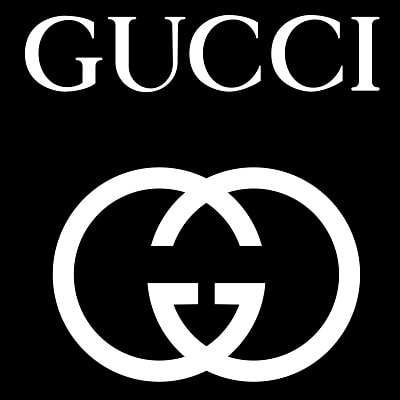
The history of Gucci
The emergence of the Gucci fashion house has not been without its upheavals. Today, however, it continues to pursue the policies of its founder and maintains its leading position on the international fashion scene.
Inception
In 1881, a son by the name of Gucci was born to a poor artisan family in Florence. From a young age the boy looked up to his father’s work creating ladies hats and learned the art of sewing.
His first attempt to open his own business, a horse harness workshop, was not a success and drove the boy into debt.
After moving to London, Guccio worked as a lift operator, porter and bellboy in a prestigious hotel. Ironically, it was these ten years that triggered the creation of the fashion house.
Becoming
During his years as a hotelier, Gucci learned to recognise a guest’s position and social class by their luggage. His exclusive, premium-quality suitcases were favoured by the rich and powerful.
Saved 30,000 lire, the young man returned to Florence in 1922 to try his business again. This time he started the production of suitcases and equipment for jockeys in precious leather.
Thirties
Aldo, the oldest of Gucci’s six children, was the creator of the famous Gucci logo. The small workshop grew into a small factory in 1937 which also produced gloves, handbags, scarves and ties. A year later the first flagship shop opened.

Crisis times led to a shortage of leather which led to the development of linen, jute and hemp designs. This is how the world became acquainted with the famous Bamboo Bag, a miniature handbag made from bamboo stalks.
The events of the 50s and 70s
After Gucci’s death, Aldo moved to the US and took over the expansion of his father’s business. It was there that landmark things happened: the recognizable red-green braid appeared, a boutique was opened, a women’s clothing collection was released and the brand’s products began to appear on cinematic screens. Guccio’s grandson Paolo took over the perfume branch of the company.
Fashion’s downfall
In the late 1970s, the luxury brand’s status suffered with the launch of a low-cost line of accessories – the Gucci Accessories Collection – a success with consumers, but damaging to the company’s reputation.
Paolo then had the idea of ousting his father, for which the latter threw him out of the business. In retaliation, his son denounced Aldo for failing to pay taxes. After Aldo’s arrest his place was taken by his nephew Maurizio Gucci, who teamed up with Paolo and started selling substandard products under the famous logo.
Return of confidence
Avoiding collapse, Maurizio sold the family business to Investcorp. Under Domenico De Sol’s leadership, the 90s saw a global production reform and the appointment of Thomas Ford as creative director of the company, launching a line of sought-after menswear. Next, Gucci was led by Alessandra Facchinetti and Frida Giannini. From 2015 to the present day Alessandro Michele has been the firm’s creative director.
The present time
Gucci Group owns all Gucci, YSL, Sergio Rossi and other clothing and watches. The fashion house makes charitable cash deliveries to the poor of Asian countries, helping women with education, health and difficult life situations.
